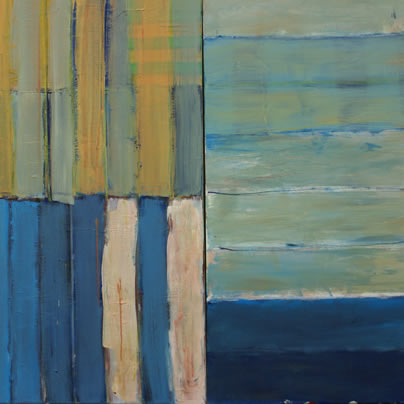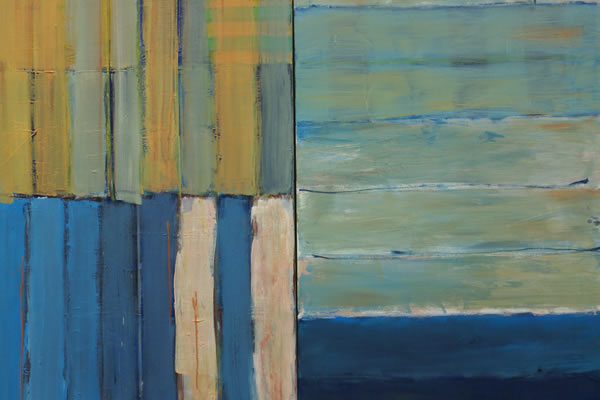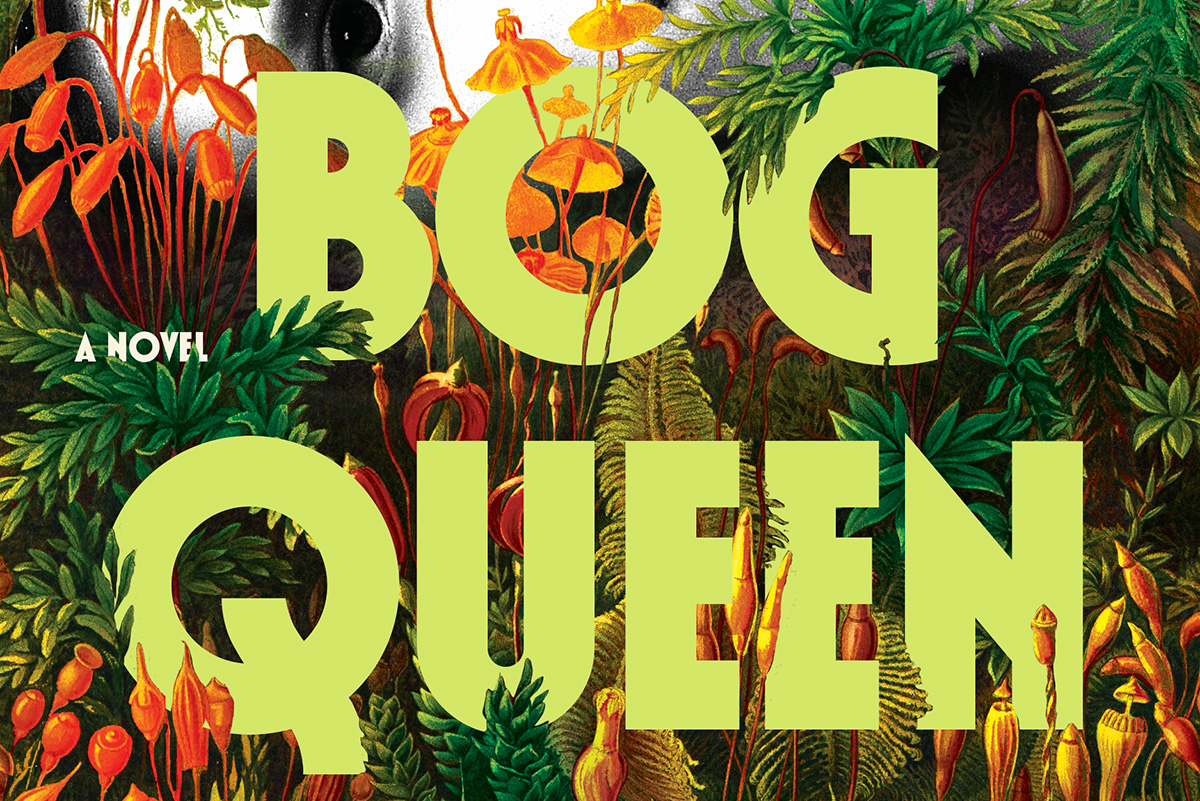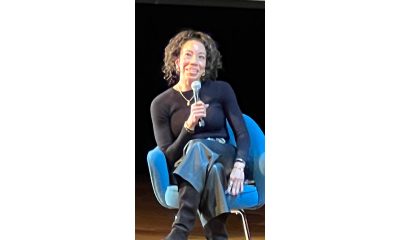Arts & Entertainment
Art of the matter
All the D.C.-regional galleries have bounteous fall exhibits planned


Many galleries have new exhibits opening this fall season including Touchstone Gallery’s ‘Color Grids’ featuring works by Charlie Dale such as ‘Chesapeake Waterman.’ (Photo courtesy Touchstone)
There are a lot of galleries all over the D.C. area and they all have new shows starting this fall season.
The Corcoran Gallery of Art (500 17th St., N.W.) has many events coming up. On Saturday, from 10 a.m. to 5 p.m., performer, choreographer and filmmaker Maida Withers will be giving an interactive performance with improvisation and a temporary installation. On Sep. 27 at 7 p.m. for Cosmo Couture 2012, the gallery will be holding “Fashion, Identity and Interiors: The Cosmo Couture Creative Process.” Tickets to this event are $15 for the public and $12 for members.
The gallery is having the first of what is planned to be an annual community day on Oct. 20 from 10 a.m. to 3 p.m. This event is free and for all ages. There will also be an exhibit entitled “Decades: 100 Years of Style and Fashion” on display on Oct. 25 at 7 p.m.
For more information on Corcoran and its upcoming events and exhibits, visit corcoran.org.
The Smithsonian’s Freer|Sackler Gallery (105 Independence Ave., S.W.) has a variety of exhibits coming up this season.
On Sep. 28, the gallery will be hosting “Asia After Dark: Asian Soundscape with DJ Spooky” at 7 p.m. The event will feature music set against Asian silent films. Attendees will be able to make their own eco-friendly drum and learn how to play rhythms from Asia. Tickets are $25 in advance,$30 at the door and $15 for Silk Road Society members.
“Nomads and Networks: The Art and Culture of Ancient Kazakhstan” featuring gold objects and gilded horns will be on display through Nov. 12.
“Road of Arabia: Archaeology and History of the Kingdom of Saudi Arabia” opens Nov. 17. It will feature recently discovered archaeological material never seen in the U.S. including alabaster bowls, glassware, earrings and more. The exhibit will be on display through Feb. 24.
The Peacock Room will be on display, restored for the first time to its appearance in 1908. The room will be open through spring.
For more information, visit asia.si.edu.
Touchstone Gallery’s (901 New York Ave., N.W.) exhibits “Color Grids,” featuring paintings by Charlie Dale and “Seen/Unseen” featuring works by Rosemary Luckett, have already opened, but there will be an event on Sep. 20 from 6 to 8:30 p.m.
They gallery also has a few exhibits opening in October including a members show, Photoweek show and exhibits featuring work by Ai-Wen Wu Krats, Rhona Schonwald and Michael Lant. In November, a show featuring works by Gale Wallar opens.
For more information on Touchstone and the upcoming shows, visit touchstonegallery.com.
The Virginia Museum of Fine Arts (200 North Blvd.) has multiple exhibits this season.
“Gesture: Judith Godwin and Abstract Expressionism” features 25 paintings by Godwin exploring a critical period in the artist’s development, will run through Jan. 27. “Fine Arts and Flowers” will feature work from more than 75 garden clubs through Virginia interpreting masterworks in VMFA’s collection with floral arrangements and will run through Oct. 28.
“Photography and Abstraction in the 1950s and ‘60s” will open Nov. 17 featuring work by photographers such as Aaron Siskind, Harry Callahan, Minor White and Gita Lenz. The exhibit will be on display through July.
For more information, visit vmfa.museum/exhibitions.
Artisphere (1101 Wilson Blvd., Arlington) is celebrating its second anniversary weekend in October with several exhibits. Opening Oct. 4 is “Craig Colorusso: Sun Boxes” at Freedom Park and Waterview Plaza at Le Meridien Hotel. “Forro in the Dark and Alma Tropicalia,” a party featuring Brazilian music and more is Oct. 6 at 8 p.m. in the Ballroom. Tickets are $20. On Oct. 7, there will be a free family day open house from 1 to 4 p.m.
Artisphere will also be holding Yarn Bomb meet-ups and stitch sessions on Wednesdays from 6 to 9 p.m. starting Oct. 17.
There are a few exhibits currently on view that will run throughout the fall including “Beyond the Parking Lot: The Change and Re-Assesment of Our Modern Landscape” will run through Nov. 4 and was inspired by the Joni Mitchell song “Big Yellow Taxi” and features contemporary landscapes by artists who are observing these changes, exposing the use of the environment in compromising ways and instigates the discussion of “where do we go from here?”
For more information, visit artisphere.com.
Torpedo Factory (105 North Union St.) is having a free event during the Alexandria King Street Art Festival. The sixth annual Art Activated will give festival attendees not only a place to cool down, but also several hands-on activities. Visitors can do screen-printing, bubble gum art, create their own button and more. There will also be a Q-Art Code Scavenger Hunt with a chance to win a $150 gift certificate to the Torpedo Factory.
For more information, visit torpedofactory.org/artactivated.
Other galleries that always have interesting exhibits and are worth checking out include Aaron Gallery at 2101 L Street NW (aarongallerydc.com), The Art League in Alexandria at 105 North Union Street (theartleague.org), Hillwood Estate, Museum and Gardens at 4155 Linnean Ave., N.W. (hillwoodmuseum.org), the Fridge D.C. at 516 8th Street, S.E. (thefridgedc.com) the Kreeger Museum at 2401 Foxhall Road, N.W. (kreegermuseum.org), the National Gallery of Art at 4th and Constitution Ave., N.W. (nga.gov) and the brand new Northern Virginia Art Center at 2120-A Crystal Plaza Arcade in Arlington (novaartcenter.org).
Books
Feminist fiction fans will love ‘Bog Queen’
A wonderful tale of druids, warriors, scheming kings, and a scientist

‘Bog Queen’
By Anna North
c.2025, Bloomsbury
$28.99/288 pages
Consider: lost and found.
The first one is miserable – whatever you need or want is gone, maybe for good. The second one can be joyful, a celebration of great relief and a reminder to look in the same spot next time you need that which you first lost. Loss hurts. But as in the new novel, “Bog Queen” by Anna North, discovery isn’t always without pain.

He’d always stuck to the story.
In 1961, or so he claimed, Isabel Navarro argued with her husband, as they had many times. At one point, she stalked out. Done. Gone, but there was always doubt – and now it seemed he’d been lying for decades: when peat cutters discovered the body of a young woman near his home in northwest England, Navarro finally admitted that he’d killed Isabel and dumped her corpse into a bog.
Officials prepared to charge him.
But again, that doubt. The body, as forensic anthropologist Agnes Lundstrom discovered rather quickly, was not that of Isabel. This bog woman had nearly healed wounds and her head showed old skull fractures. Her skin glowed yellow from decaying moss that her body had steeped in. No, the corpse in the bog was not from a half-century ago.
She was roughly 2,000 years old.
But who was the woman from the bog? Knowing more about her would’ve been a nice distraction for Agnes; she’d left America to move to England, left her father and a man she might have loved once, with the hope that her life could be different. She disliked solitude but she felt awkward around people, including the environmental activists, politicians, and others surrounding the discovery of the Iron Age corpse.
Was the woman beloved? Agnes could tell that she’d obviously been well cared-for, and relatively healthy despite the injuries she’d sustained. If there were any artifacts left in the bog, Agnes would have the answers she wanted. If only Isabel’s family, the activists, and authorities could come together and grant her more time.
Fortunately, that’s what you get inside “Bog Queen”: time, spanning from the Iron Age and the story of a young, inexperienced druid who’s hoping to forge ties with a southern kingdom; to 2018, the year in which the modern portion of this book is set.
Yes, you get both.
Yes, you’ll devour them.
Taking parts of a true story, author Anna North spins a wonderful tale of druids, vengeful warriors, scheming kings, and a scientist who’s as much of a genius as she is a nerd. The tale of the two women swings back and forth between chapters and eras, mixed with female strength and twenty-first century concerns. Even better, these perfectly mixed parts are occasionally joined by a third entity that adds a delicious note of darkness, as if whatever happens can be erased in a moment.
Nah, don’t even think about resisting.
If you’re a fan of feminist fiction, science, or novels featuring kings, druids, and Celtic history, don’t wait. “Bog Queen” is your book. Look. You’ll be glad you found it.
Movies
A Shakespearean tragedy comes to life in exquisite ‘Hamnet’
Chloe Zhao’s devastating movie a touchstone for the ages

For every person who adores Shakespeare, there are probably a dozen more who wonder why.
We get it; his writings, composed in a past when the predominant worldview was built around beliefs and ideologies that now feel as antiquated as the blend of poetry and prose in which he wrote them, can easily feel tied to social mores that are in direct opposition to our own, often reflecting the classist, sexist, and racist patriarchal dogma that continues to plague our world today. Why, then, should we still be so enthralled with him?
The answer to that question might be more eloquently expressed by Chloe Zhao’s “Hamnet” – now in wide release and already a winner in this year’s barely begun awards season – than through any explanation we could offer.
Adapted from the novel by Maggie O’Farrell (who co-wrote the screenplay with Zhao), it focuses its narrative on the relationship between Will Shakespeare (Paul Mescal) and his wife Agnes Hathaway (Jessie Buckley), who meet when the future playwright – working to pay off a debt for his abusive father – is still just a tutor helping the children of well-to-do families learn Latin. Enamored from afar at first sight, he woos his way into her life, and, convincing both of their families to approve the match (after she becomes pregnant with their first child), becomes her husband. More children follow – including Hamnet (Jacobi Jupe), a “surprise” twin boy to their second daughter – but, recognizing Will’s passion for writing and his frustration at being unable to follow it, Agnes encourages him to travel to London in order to immerse himself in his ambitions.
As the years go by, Agnes – aided by her mother-in-law (Emily Watson) and guided by the nature-centric pagan wisdom of her own deceased mother – raises the children while her husband, miles away, builds a successful career as the city’s most popular playwright. But when an outbreak of bubonic plague results in the death of 11-year-old Hamnet in Will’s absence, an emotional wedge is driven between them – especially when Agnes receives word that her husband’s latest play, titled “Hamlet,” considered an interchangeable equivalent to the name of their dead son, is about to debut on the London stage.
There is nothing, save the bare details of circumstance around the Shakespeare family, that can be called factual about the narrative told in “Hamnet.” Records of Shakespeare’s private life are sparse and short on context, largely limited to civic notations of fact – birth, marriage, and death announcements, legal documents, and other general records – that leave plenty of blank spaces in which to speculate about the personal nuance that such mundane details might imply. What is known is that the Shakespeares lost their son, probably to the plague, and that “Hamlet” – a play dominated by expressions of grief and existential musings about life and death – was written over the course of the next five years. Shakespearean scholars have filled in the blanks, and it’s hard to argue with their assumptions about the influence young Hamnet’s tragic death likely had over the creation of his father’s masterwork. What human being would not be haunted by such an event, and how could it not impact every aspect of their experience in the world forever after?
In their screenplay, O’Farrell and Zhao imagine an Agnes Shakespeare (most records refer to her as “Anne” but her father’s will uses the name “Agnes”) who stands apart from the conventions of her town, born of a “wild woman” in the woods and raised in ancient traditions of mysticism and nature magic before being adopted into her well-off family, who presents a worthy match and an intellectual equal for the brilliantly passionate creator responsible for some of Western Civilization’s most iconic tales. They imagine a courtship that would have defied the customs of the time and a relationship that feels almost modern, grounded in a love and mutual respect that’s a far cry from most popular notions of what a 16th-century marriage might look like. More than that, they imagine that the devastating loss of a child – even in a time when the mortality rate for children was high – might create a rift between two parents who can only process their grief alone. And despite the fact that almost none of what they present to us can be seen, at best, as anything other than informed speculation, it all feels devastatingly true.
That’s the quality that “Hamnet” shares with the ever-popular Will Shakespeare; though it takes us into a past that feels almost as alien to us as if it took place upon a different planet, it evokes a connection to the simple experience of being human, which cuts through the differences in context. Just as the kings, heroes, and fools of Shakespeare’s plays express and embody the same emotional experiences that shape our own mundane modern lives, the film’s portrayal of these two real-life people torn apart by personal tragedy speaks directly to our own shared sense of loss – and it does so with an eloquence that, like Shakespeare’s, emerges from the story to make it feel as palpable as if their grief was our own.
Yes, the writing and direction – each bringing a powerfully feminine “voice” to the story – are key to the emotional impact of “Hamnet,” but it’s the performances of its stars that carry it to us. Mescal, once more proving himself a master at embodying the kind of heartfelt, masculine tenderness that’s capable of melting our hearts, gives us an accessible Shakespeare, driven perhaps by a spark of genius yet deeply grounded in a tangible humanity that underscores the “everyman” sensibility that informs the man’s plays. But it’s Buckley’s movie, by a wide margin, and her bold, fierce, and deeply affecting performance gives voice to a powerful grief, a cry against the injustice and cruelty of what we fumblingly call “fate” that resonates deep within us and carries our own grief, over losses we’ve had and losses we know are yet to come, along with her on the journey to catharsis.
That’s the word – “catharsis” – that defines why Shakespeare (and by extension, “Hamnet”) still holds such power over the imagination of our human race all these centuries later. The circumstantial details of his stories, wrapped up in ancient ideologies that still haunt our cultural imagination, fall away in the face of the raw expression of humanity to which his characters give voice. When Hamlet asks “to be or not to be?,” he is not an old-world Danish Prince contemplating revenge against a traitor who murdered his father; he is Shakespeare himself, pondering the essential mystery of life and death, and he is us, too.
Likewise, the Agnes Shakespeare of “Hamnet” (masterfully enacted by Buckley) embodies all our own sorrows – past and future, real and imagined – and connects them to the well of human emotion from which we all must drink; it’s more powerful than we expect, and more cleansing than we imagine, and it makes Zhao’s exquisitely devastating movie into a touchstone for the ages.
We can’t presume to speak for Shakespeare, but we are pretty sure he would be pleased.

Friday, January 9
Women in Their Twenties and Thirties will be at 8 p.m. on Zoom. This is a social discussion group for queer women in the Washington, D.C. area. For more details, visit Facebook.
“Backbone Comedy” will be at 8 p.m. at As You Are. Backbone Comedy is a queer-run fundraiser comedy show at As You Are Bar DC, where comics stand up for a cause. Each show, a percentage of proceeds go to a local organization – Free Minds DC, a reentry organization for individuals impacted by incarceration. Tickets cost $19.98 and are available on Eventbrite.
Saturday, January 10
Go Gay DC will host “LGBTQ+ Community Brunch” at 11 a.m. at Freddie’s Beach Bar & Restaurant. This fun weekly event brings the DMV area LGBTQ+ community, including allies, together for delicious food and conversation. Attendance is free and more details are available on Eventbrite.
Monday, January 12
“Center Aging: Monday Coffee Klatch” will be at 10 a.m. on Zoom. This is a social hour for older LGBTQ+ adults. Guests are encouraged to bring a beverage of choice. For more information, contact Adam ([email protected]).
Genderqueer DC will be at 7 p.m. on Zoom. This is a support group for people who identify outside of the gender binary, whether you’re bigender, agender, genderfluid, or just know that you’re not 100% cis. For more details, visit genderqueerdc.org or Facebook.
Tuesday, January 13
Coming Out Discussion Group will be at 7 p.m. on Zoom. This is a safe space to share experiences about coming out and discuss topics as it relates to doing so — by sharing struggles and victories the group allows those newly coming out and who have been out for a while to learn from others. For more details, visit the group’s Facebook.
Trans Discussion Group will be at 7 p.m. on Zoom. This group is intended to provide an emotionally and physically safe space for trans people and those who may be questioning their gender identity/expression to join together in community and learn from one another. For more details, email [email protected].
Wednesday, January 14
Job Club will be at 6 p.m. on Zoom upon request. This is a weekly job support program to help job entrants and seekers, including the long-term unemployed, improve self-confidence, motivation, resilience and productivity for effective job searches and networking — allowing participants to move away from being merely “applicants” toward being “candidates.” For more information, email [email protected] or visit thedccenter.org/careers.
The DC Center for the LGBT Community will partner with House of Ruth to host “Art & Conversation” at 3 p.m. at 1827 Wiltberger St., N.W. This free workshop will involve two hours of art making, conversation, and community. Guests will explore elements of healthy relationships with a community-centered art activity. This workshop involves paint, so please dress accordingly. All materials will be provided. For more details, email [email protected].
Thursday, January 15
The DC Center’s Fresh Produce Program will be held all day at the DC Center for the LGBT Community. People will be informed on Wednesday at 5 p.m. if they are picked to receive a produce box. No proof of residency or income is required. For more information, email [email protected] or call 202-682-2245.
Virtual Yoga Class will be at 7 p.m. on Zoom. This free weekly class is a combination of yoga, breathwork and meditation that allows LGBTQ+ community members to continue their healing journey with somatic and mindfulness practices. For more details, visit the DC Center’s website.
-

 National4 days ago
National4 days agoWhat to watch for in 2026: midterms, Supreme Court, and more
-

 District of Columbia5 days ago
District of Columbia5 days agoTwo pioneering gay journalists to speak at Thursday event
-

 a&e features5 days ago
a&e features5 days agoQueer highlights of the 2026 Critics Choice Awards: Aunt Gladys, that ‘Heated Rivalry’ shoutout and more
-

 Colombia5 days ago
Colombia5 days agoBlade travels to Colombia after U.S. forces seize Maduro in Venezuela




















